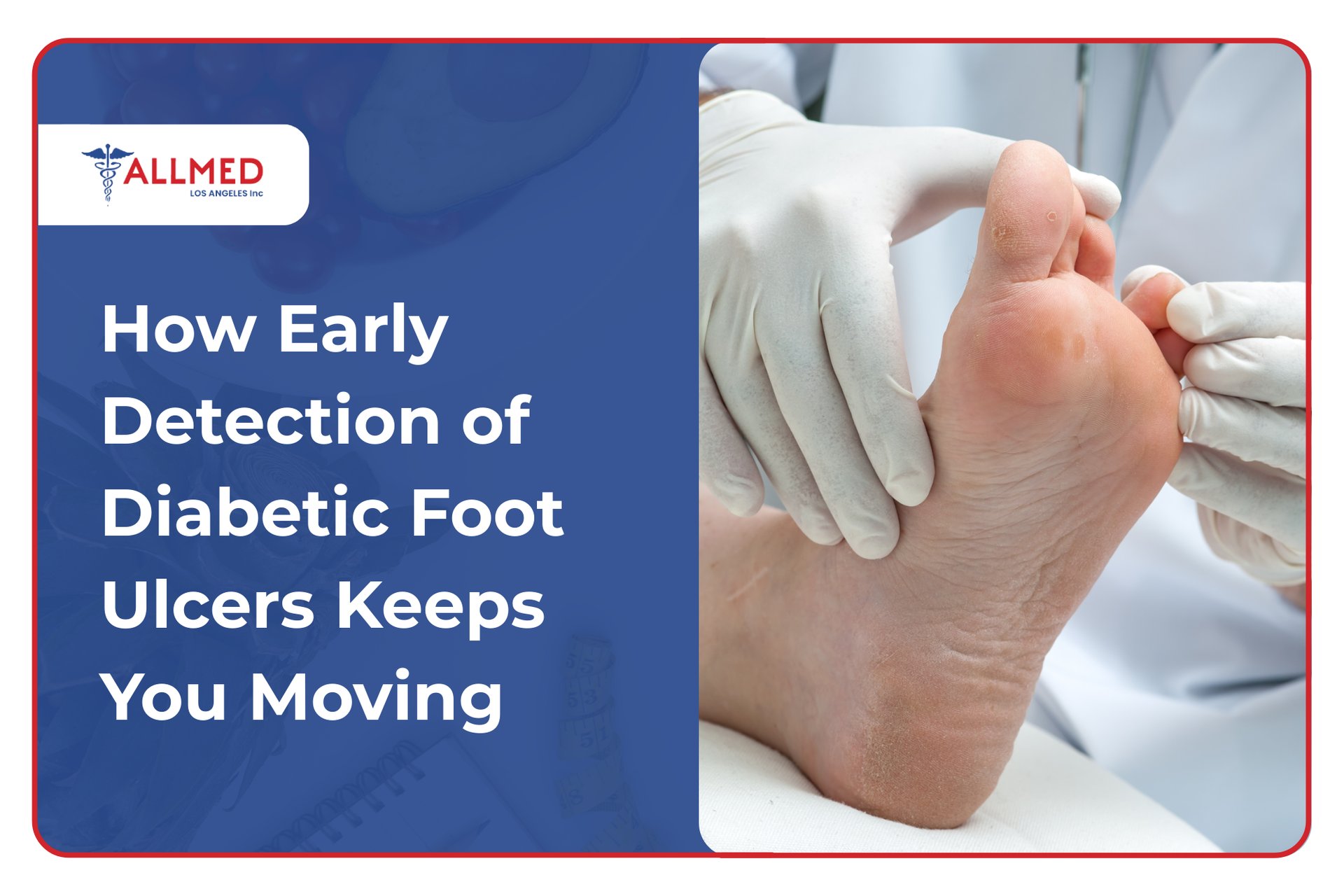We’ve all had that moment—telling ourselves, 'I’ll get around to it eventually,' whether it’s about exercising more, eating better, or scheduling a checkup. But with life moving at full speed, that 'later' often never comes. It’s easy to let health exams slip down the list of priorities, especially when nothing seems wrong.
Yet, making the time for routine checkups is about giving yourself peace of mind and making sure you’re as healthy as you feel. These regular visits to a doctor are more than just checkmarks on a list; they’re essential in identifying potential health issues before they become major problems.
It’s also completely normal to feel overwhelmed or confused about which health exams are really necessary. Two of the most common types are
physical exams and annual wellness exams. While they may seem similar, they serve different but equally important roles in your health management.
Book Your Wellness and Physical Exams at Allmed LA!
What Is a Physical Exam?
Most people think of a physical exam when they hear the word "checkup." It’s a comprehensive evaluation of your current physical state, where your doctor gets a clear picture of your overall health. The process usually begins with checking vital signs like blood pressure, heart rate, temperature, and respiratory rate.
During a routine physical, your provider may check the following to confirm everything’s in a healthy range and to detect irregularities. If anything stands out, your doctor will request additional lab tests or imaging to investigate further.
- Weight
- Height
- Reflexes
- Abdomen
- Heart and lungs
- Body mass index (BMI)
A crucial part of a physical exam is addressing any immediate health concerns you may have. If you've experienced new symptoms or discomfort, this is the time to discuss them with your provider.
What Is an Annual Wellness Exam?
An annual wellness exam, on the other hand, is more future-focused. It’s less about diagnosing current problems and more about creating a long-term plan to maintain your health. The annual wellness exam was introduced as part of Medicare’s preventive services, but many healthcare providers now offer them as part of a broader preventive care strategy.
During an annual wellness check-up, the focus shifts to preventive care and chronic disease management. You and your doctor will collaborate to create the following:
- A personalized health plan
- Health goals for your future well-being
- Lifestyle changes, such as changing your diet and getting more exercise
- Stress management and chronic disease prevention plan
How Physicals and Wellness Exams Work Together
Although annual wellness exams and physicals serve different purposes, they complement each other perfectly. While a physical exam provides an immediate assessment of your current health, a yearly wellness exam looks ahead, planning for your long-term well-being.
Think of physicals as moment-to-moment checkups that catch any urgent issues and assess your body's present functions. In contrast, an annual wellness exam is about tomorrow, focusing on prevention and lowering the risk of chronic illnesses.
Frequently Asked Questions
What about sports physicals?
For athletes or anyone who exercises regularly, a sports physical or a pre-participation physical examination (PPE) is a health exam meant to assess fitness levels and ensure it's safe to engage in sports or strenuous activities. Schools, sports teams, and athletic programs require this check before participation.
During a sports physical, your doctor focuses on factors that may affect athletic performance, such as:
- Muscle and joint function
- Heart health
- Overall fitness levels
- Medical history (asthma, past injuries, or any chronic conditions)
While sports physicals are essential for athletes, they should not replace a comprehensive annual wellness check-up and physical exam. Sports physicals focus more on immediate fitness and safety for athletic participation.
What’s a Medicare Annual Wellness Visit?
A
Medicare Annual Wellness Visit (AWV) is a yearly preventive care appointment for individuals enrolled in Medicare Part B for more than one year.
AWV focuses on three main components to create a personalized preventive health plan:
- Health Risk Assessment (HRA): Patients complete a questionnaire covering demographics, self-reported health, behavioral risks, medical history, family history, psychosocial risks, and daily living activities. This assessment helps identify potential risk factors like cognitive decline or chronic conditions.
- Vital Sign Collection: A healthcare provider will get routine measurements, such as blood pressure, weight, height, and BMI, to assess risks for cardiovascular disease, hypertension, and obesity.
- Consultation and Prevention Planning: The provider uses the HRA and vitals to develop a long-term prevention plan, usually spanning 5–10 years. This plan includes screenings, health goals, and lifestyle recommendations to help support long-term well-being.
Does Medicare cover physical exams?
Medicare does not cover traditional routine physical exams in the way that private insurance might. However,
Medicare does cover two specific types of preventive visits often mistaken for physical exams: the Annual Wellness Visit and the Initial Preventive Physical Examination (IPPE).
Here's how each works:
- Initial Preventive Physical Examination: Also called the "Welcome to Medicare" visit, the IPPE is a one-time exam offered to new Medicare beneficiaries within the first 12 months of enrolling in Medicare Part B.
What it includes:
The IPPE is not a full physical exam but focuses on preventive care, including a review of your medical and social history, education about preventive services, and counseling about healthy lifestyle choices.
- Annual Wellness Visit: After the IPPE, Medicare covers the Annual Wellness Visit once every 12 months (365 days). This visit is not the same as a routine physical exam.
What it includes:
The AWV focuses on preventive care by reviewing your health status, updating your personalized prevention plan, and setting goals for maintaining or improving your health. It includes services like routine screenings, risk assessments, and discussions about future care.
- Routine Physical Exam: Unlike private insurance plans, Medicare does not cover routine physical exams. If you want a complete physical check-up, you would likely need to pay out-of-pocket, as Medicare only covers the IPPE and AWV under its preventive services.
What it includes:
These are
traditional exams where your doctor checks your overall health, including a head-to-toe assessment, lab work, and more extensive tests.
Who can benefit from physical exams or annual wellness exams?
Physical and annual wellness exams benefit everyone, regardless of age or health status. Wellness exams, in particular, are especially helpful for those over 65, people with a family history of chronic illnesses, individuals on multiple medications, or anyone aiming to set long-term health goals.
If I feel healthy, do I still need these exams?
Yes. While it may be tempting to skip one of these exams if you feel healthy,
yearly physical check-ups and wellness exams are crucial for comprehensive health management. Physical exams can uncover issues you might not be aware of, while wellness exams help keep future problems at bay.
Be in Your Best Health!
Staying on top of your physical checkups and wellness exams ensures you're healthy today and on track for a healthier tomorrow. Regular health evaluations save you time, money, and bigger headaches down the road.
Up next, we’re breaking down the importance of annual physicals and how they support your health. Stay tuned for our next blog!
Whether it’s your annual wellness exam or a physical,
Allmed LA is ready to provide top-notch care for your whole family. Schedule your visit or walk in at any of our
LA clinics.















